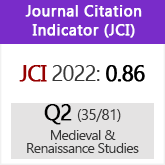La representación ciudadana en las asambleas estamentales castellanas: Cortes y Santa Junta Comunera. Análisis comparativo del perfil sociopolítico de los procuradores
DOI:
https://doi.org/10.3989/aem.2004.v34.i2.166Keywords:
Castile, Parliament, Revolt of the «Comunidades», Fifteenth Century, Sixteenth Century, TownsAbstract
The main organ of government of the «Comunero» rebels, the «Santa Junta», came to life as an extraordinary assembly of the towns that had the right to send deputies to the Cortes (Parliament), that was summoned by someof these towns, without the consent of the king. This institution has been described as revolutionary. But in this paper the author tries to prove that in many respects it followed the model of the Castilian Cortes of the fifteenth century and of the first decades of the sixteenth century. He pays attention to the study of the social prolife of the deputies sent by the towns to the «Santa Junta», and he proves that most of them belonged to the same sociopolitical group that the deputies to the Cortes. At the same time he shows that an important number of towns that sent deputies to this assembly didn't advocate constitutional changes of any kind, and since the beginning they made efforts to prevent actions that implied disobedience to the king, and finally ended up by ordering their deputies to leave the assembly.
Downloads
Download data is not yet available.
Downloads
Published
2004-12-30
How to Cite
Diago Hernando, M. (2004). La representación ciudadana en las asambleas estamentales castellanas: Cortes y Santa Junta Comunera. Análisis comparativo del perfil sociopolítico de los procuradores. Anuario De Estudios Medievales, 34(2), 599–665. https://doi.org/10.3989/aem.2004.v34.i2.166
Issue
Section
Monographies
License
Copyright (c) 2004 Consejo Superior de Investigaciones Científicas (CSIC)

This work is licensed under a Creative Commons Attribution 4.0 International License.
© CSIC. Manuscripts published in both the printed and online versions of this Journal are the property of Consejo Superior de Investigaciones Científicas, and quoting this source is a requirement for any partial or full reproduction.All contents of this electronic edition, except where otherwise noted, are distributed under a “Creative Commons Attribution 4.0 International” (CC BY 4.0) License. You may read here the basic information and the legal text of the license. The indication of the CC BY 4.0 License must be expressly stated in this way when necessary.
Self-archiving in repositories, personal webpages or similar, of any version other than the published by the Editor, is not allowed.














